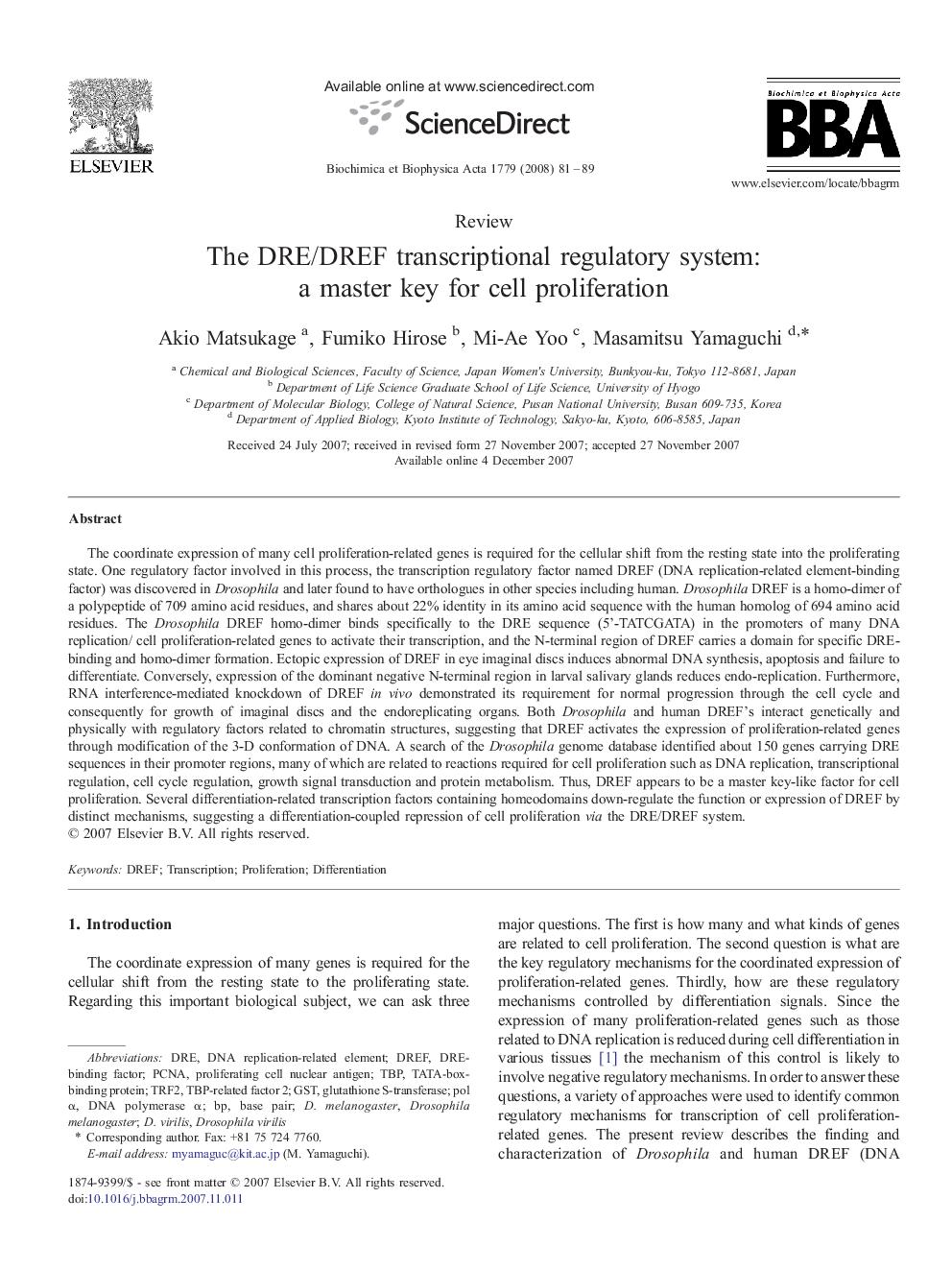| Article ID | Journal | Published Year | Pages | File Type |
|---|---|---|---|---|
| 1947036 | Biochimica et Biophysica Acta (BBA) - Gene Regulatory Mechanisms | 2008 | 9 Pages |
The coordinate expression of many cell proliferation-related genes is required for the cellular shift from the resting state into the proliferating state. One regulatory factor involved in this process, the transcription regulatory factor named DREF (DNA replication-related element-binding factor) was discovered in Drosophila and later found to have orthologues in other species including human. Drosophila DREF is a homo-dimer of a polypeptide of 709 amino acid residues, and shares about 22% identity in its amino acid sequence with the human homolog of 694 amino acid residues. The Drosophila DREF homo-dimer binds specifically to the DRE sequence (5'-TATCGATA) in the promoters of many DNA replication/ cell proliferation-related genes to activate their transcription, and the N-terminal region of DREF carries a domain for specific DRE-binding and homo-dimer formation. Ectopic expression of DREF in eye imaginal discs induces abnormal DNA synthesis, apoptosis and failure to differentiate. Conversely, expression of the dominant negative N-terminal region in larval salivary glands reduces endo-replication. Furthermore, RNA interference-mediated knockdown of DREF in vivo demonstrated its requirement for normal progression through the cell cycle and consequently for growth of imaginal discs and the endoreplicating organs. Both Drosophila and human DREF's interact genetically and physically with regulatory factors related to chromatin structures, suggesting that DREF activates the expression of proliferation-related genes through modification of the 3-D conformation of DNA. A search of the Drosophila genome database identified about 150 genes carrying DRE sequences in their promoter regions, many of which are related to reactions required for cell proliferation such as DNA replication, transcriptional regulation, cell cycle regulation, growth signal transduction and protein metabolism. Thus, DREF appears to be a master key-like factor for cell proliferation. Several differentiation-related transcription factors containing homeodomains down-regulate the function or expression of DREF by distinct mechanisms, suggesting a differentiation-coupled repression of cell proliferation via the DRE/DREF system.
